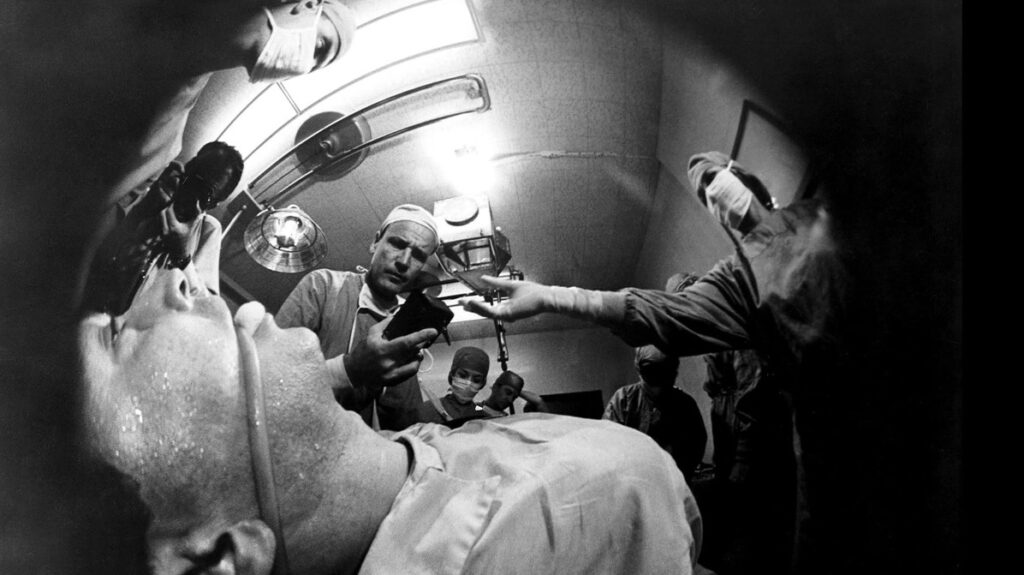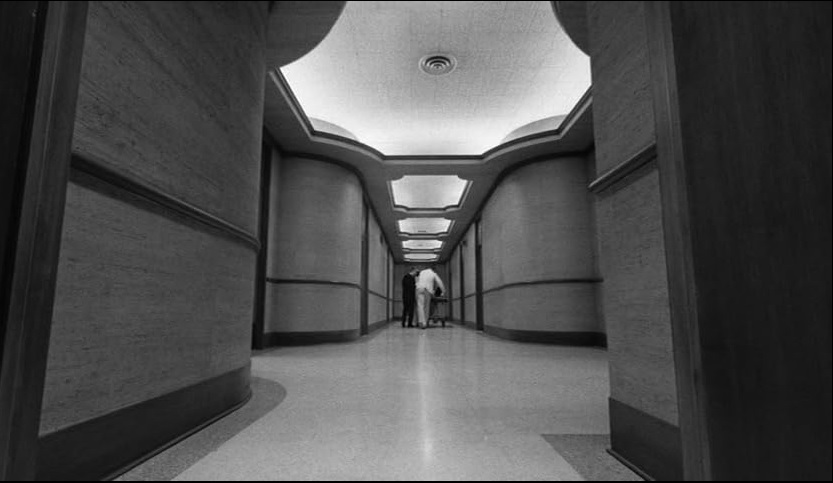| Bob Aulert |

Seconds plays at the Trylon Cinema from Friday, September 13th, through Sunday, September 15th. Visit trylon.org for tickets and more information.
In 1966, Rock Hudson had been a movie star since the early 1950s—by his mere presence, he could generate the financial support to get a movie made AND then get people to buy tickets to see it. John Frankenheimer had parlayed solid network TV jobs like Playhouse 90 and other anthology series into an even more impressive film career (Birdman of Alcatraz, The Train). The two then collaborated to produce Seconds—a film unlike anything either had done before. A critical and financial failure at the time, it has steadily gained stature over the years and now stands as a cult classic; one of the finest films of the 1960s.
Seconds is the third and crowning chapter of what is known as Frankenheimer’s “Paranoia Trilogy,” following The Manchurian Candidate (1962), a film about a man hypnotically programmed to kill; and the nuclear dread, Cold War anxieties, and neofascist skullduggery in Seven Days in May (1964), about a military plot to seize the American government.
Seconds cuts even closer to the bone, exposing the fragility of the American dream through a blend of elements assembled from several genres: horror, noir, psychological drama, and science fiction collide with suspense worthy of Hitchcock, outrageousness worthy of Kafka, and an acidic critique of American capitalism. Adapted from a novel by David Ely, it is a captivating and unsettling film that contains themes of identity, existential angst, and the quest for meaning.

The story centers on Arthur Hamilton (John Randolph), a middle-aged banker who feels trapped in his monotonous and unfulfilling existence. He receives a mysterious invitation to participate in an experimental procedure that promises to give him a new lease on life. The process, offered by a secretive organization known as “The Company,” involves a radical transformation: Hamilton will undergo surgery to assume a completely new identity. After undergoing the transformation, he emerges as the younger Tony Wilson (Rock Hudson), adopting a new life filled with artistic ambitions and romantic possibilities.
Wilson represents the idealized version of what Hamilton believes he wants. Initially, his new life seems to be everything Hamilton had hoped for—excitement, freedom, and youth. But as the story unfolds the film reveals the dark side of this seemingly perfect escape. The transformation, meant to be a form of reinvention, ultimately proves to be a prison of its own, as Wilson struggles with the alienation and existential dread that comes with his new life.
One of the most striking aspects of Seconds is its exploration of identity. It delves into the concept of self and how it is influenced by external factors and internal desires. Hamilton’s initial dissatisfaction with his life leads him to seek a new identity, but the film questions whether changing one’s outward appearance can ever truly alter one’s inner self. Despite his physical transformation, Hamilton’s core identity remains. This disconnect between appearance and essence is central to the film’s narrative and thematic core.
Frankenheimer’s direction is central to conveying the film’s unsettling atmosphere. The film’s visual style is notable for its use of experimental techniques and its unsettling portrayal of suburban life. The cinematography, led by James Wong Howe, employs wide-angle lenses and off-kilter framing to create a sense of disorientation and unease. This visual approach complements the film’s themes, enhancing the feeling of increasing alienation that pervades Wilson’s life.
The film also makes effective use of its settings. The contrast between Hamilton’s staid, suburban life and the vibrant, but ultimately hollow, existence of Wilson underscores the film’s commentary on The American Dream and the pursuit of happiness. Hamilton’s suburban life is depicted as stifling and conformist, while Wilson’s new world, although seemingly more glamorous, is marked by its own set of constraints and disillusionments. This duality highlights the idea that no matter the external changes, true fulfillment remains elusive.

Rock Hudson’s performance as Tony Wilson is particularly noteworthy. Known primarily for his roles in romantic and melodramatic films, Hudson’s portrayal of Wilson is a departure from his typical screen persona. His performance deftly captures the vulnerability and confusion of a man who is both liberated and imprisoned by his new identity. Hudson’s ability to convey Wilson’s internal conflict adds depth to the character and elevates the film’s exploration of identity and existential dread.
The film’s score from composer Jerry Goldsmith further amplifies its psychological tension. The music’s haunting and dissonant qualities mirror the film’s themes, creating an auditory landscape that enhances the viewer’s immersion into Wilson’s ultimately unsettling new world.
Seconds is also notable for its bold and thought-provoking themes, which were ahead of their time. The film raises questions about the nature of self, the limits of personal transformation, and the societal pressures that shape our desires and identities. Its exploration of these themes remains relevant today, resonating with contemporary audiences who grapple with similar questions about identity and fulfillment.
Nearly sixty years after its initial release, Seconds remains unique—a probing psychological adventure, a merciless assault on social evils, and one of the most startling, disturbing rides you’ll take.

Edited by Olga Tchepikova-Treon
